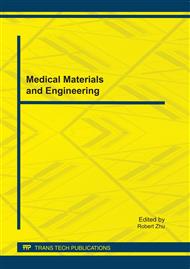[1]
R. Porat, B. Weiss, L.Cohen, A. Dau, N. Aharoni, Reduction of postharvest rind disorders in citrus fruit by modified atmosphere packaging, Postharvest Biol.Technol. 33 (2004) 35- 43.
DOI: 10.1016/j.postharvbio.2004.01.010
Google Scholar
[2]
I. Shome, Y. Erner, The nature of oleocellosis in citrus fruits, Bot.Gazette. 50 (1989) 281–288.
DOI: 10.1086/337773
Google Scholar
[3]
R.E. Henriod, Postharvest characteristics of navel oranges following high humidity and low temperature storage and transport, Postharvest Biol. Technol. 42(2006) 57–64.
DOI: 10.1016/j.postharvbio.2006.05.012
Google Scholar
[4]
G. Morris, G. Foord, Improving citrus fruit quality using Gibberellic Acid (GA), Department of Agriculture and Food. 6 (2006) 149-151.
Google Scholar
[5]
J.F. Cajuste, M.T. Lafuente, Ethylene-induced tolerance to non-chilling peel pitting as related to phenolic metabolism and lignin content in 'Navelate' fruit, Postharvest Biol. Technol. 45 (2007) 193-203.
DOI: 10.1016/j.postharvbio.2007.01.019
Google Scholar
[6]
S.H. Mirdehghan, M. Rahemi, S. Castillo, et al., Pre-storage application of polyamines by pressure or immersion improves shelf-life of pomegranate stored at chilling temperature by increasing endogenous polyamine levels, Postharvest Biol. Technol. 44 (2007) 26-33.
DOI: 10.1016/j.postharvbio.2006.11.010
Google Scholar
[7]
S. Kondo, P. Posuya, S.Kanlayanarat, Changes in physical characteristics and polyamines during maturation and storage of rambutans, Sci. Horti. 91 (2001) 101-109.
DOI: 10.1016/s0304-4238(01)00250-3
Google Scholar
[8]
R.K. Kakkar, V.K. Sawhney, Polyamine research in plants—a changing perspective, Physiol. Plant.116 (2003) 281-292.
Google Scholar
[9]
W.P. Zhang, B. Jiang, W.G. Li, H. Song, Y.S. Yu, J.F. Chen, Polyamines enhance chilling tolerance of cucumber (Cucumis sativus L.) through modulating antioxidative system, Sci. Horti. 122 (2009) 200-208.
DOI: 10.1016/j.scienta.2009.05.013
Google Scholar
[10]
Y.M. Jiang, F. Chen, Astudy on polyamine change and browning of fruit during cold storage of litchi (Litchi chinensis Sonn.), Postharvest Biol. Technol. 5 (1995) 245-250.
DOI: 10.1016/0925-5214(94)00021-j
Google Scholar
[11]
S.I. Hong, H.H. Lee, D. Kim, Effects of hot water treatment on the storage stability of satsuma mandarin as a postharvest decay control, Postharvest Biol. Technol. 43(2007), 271-279.
DOI: 10.1016/j.postharvbio.2006.09.008
Google Scholar
[12]
M. Schirra, M. Mulas, A. Fadda, E. Cauli, Cold quarantine responses of blood oranges to postharvest hot water and hot air treatments, Postharvest Biol. Technol. 32(2004) 191–200.
DOI: 10.1016/j.postharvbio.2003.09.002
Google Scholar
[13]
G.A. Gonzalez-Aguilar, L. Zacarias, M. Mulas, M.T. Lafuente, Temperature and duration of water dips influence chilling injury, decay and polyamine content in 'Fortune' mandarins, Postharvest Biol. Technol. 12 (1997) 61-69.
DOI: 10.1016/s0925-5214(97)00036-7
Google Scholar
[14]
B.L. Wild, New method for quantitatively assessing susceptibility of citrus fruit to oleocellosis development and some factors that affect its expression, Australian Journal of Experimental Agriculture. 38 (1998) 279–285.
DOI: 10.1071/ea96070
Google Scholar
[15]
T. Knight, A.Klieber, M. Sedgley, Structural basis of rind disorder oleocellosis in Washington Navel orange, Ann Bot. 90 (2002) 765-773.
DOI: 10.1093/aob/mcf258
Google Scholar
[16]
K.F. Zeng, Y.Y. Deng, J. Ming, L.L. Deng. Induction of disease resistance and ROS metabolism in navel oranges by chitosan, Scientia Horticulturae. 126 (2010) 223-228.
DOI: 10.1016/j.scienta.2010.07.017
Google Scholar


